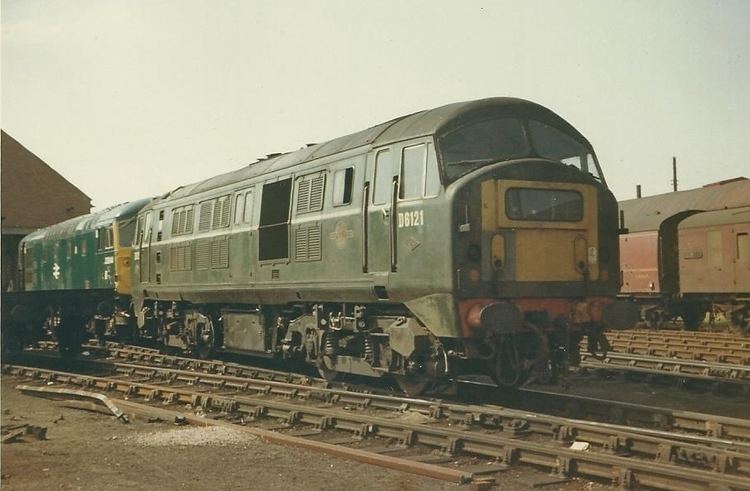Power type Diesel-electric Number rebuilt 20 | Rebuilder Paxman | |
 | ||
Build date 1958–1960 (original class 21) Rebuild date Rebuilt: 1963, 1965–1967 | ||
The British Rail Class 29 were a class of 20 diesel-electric Bo-Bo locomotives produced by the re-engining of the British Rail Class 21 units. The units were designed for both passenger and freight trains. The outwardly similar Class 22 shared no mechanical parts with the 29s.
Contents
Background
The machines were produced from 1963 onwards from the North British Class 21 by replacing the original unreliable licence-built MAN of the Class 21s with Paxman Ventura V12 engine at Paxman's Colchester works.
The first unit to be re-engined was D6123, a further 19 machines were re-engined in 1964-1965 at Glasgow Works and mostly Inverurie Works, along with other modifications including the fitting of four-character headcode displays in the nose ends (D6123 retained its original front ends and so did not receive a headcode panel). After rebuilding, they returned to service from Eastfield depot in Glasgow.
Withdrawal
Although these offered more power and much improved reliability over the original Class 21s, they did not survive much longer, due to their small class size and the use of a non-standard high-speed diesel engine. D6108 was withdrawn in May 1969 and scrapped by McWilliams of Shettleston in 1971, while the other 19 were withdrawn between April and December 1971 and scrapped at BR's Glasgow Works in 1971-72. No Class 21, 22 or Class 29 locomotives survive today.
Numbering
The rebuilt locomotives were numbered:
Models
Hornby produced a OO gauge ready-to-run Class 29 in the late 1970s in BR green and blue liveries. Jouef produced an HO-gauge ready-to-run Class 29 in 1975.
